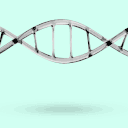"Jumping genes" in CRISPR therapy could make gene editing more precise

Published Date: 6/13/2019
Source: axios.com
Two prominent teams of scientists recently announced transposons — or "jumping genes" — can improve the precision of CRISPR gene editing.Why it matters: While this research is still in early stages, as both teams tested their techniques on bacterial cells, experts say the technique could allow edited genes to be more precisely inserted into genomes, possibly addressing concerns with current CRISPR systems that can lead to off-target editing and random deletions or even cancer.Background: Transposons randomly jump from one site to the other, inserting genetic information as they go, using enzymes called transposases.CRISPR tools currently use enzymes like Cas9 and Cas13 to cut and delete a portion of the genetic code, counting on the cell to use its repair function to glue the cut strands back together. That process sometimes introduces its own problems. By combining the CRISPR tool with these transposons, which have the ability to easily introduce a large number of genes into cells, researchers hope to merge the best of both worlds, says Ilya Finkelstein, assistant professor at the University of Texas at Austin who was not part of either study.Details: Both studies essentially combine CRISPR with different transposons and, in the process, unveil details about how natural CRISPR systems have evolved and why there are a diverse number of systems.Study 1. CAST — This system, which stands for CRISPR-associated transposase, was published in Science last week by a team lead by the Broad Institute of MIT and Harvard University."This is filling a gap we couldn't address before, to able to insert DNA into the genome," study author Feng Zhang says of the ability to insert large genomes in a directed way.They found the system, which uses a protein called Cas12K and Tn-7 transposes, produced the desired edit up to 80% of the time, which is higher than current CRISPR tools (roughly 20%). But, it also still had a number of off-target insertions.Study 2. Cascade — This system was developed mainly by Columbia University and was published in Nature Wednesday.Study author Sam Sternberg tells Axios, "Our discovery of RNA-guided integrases offers a fresh new approach, with the same programmability and ease of use as CRISPR–Cas9, but without the adverse effects associated with DNA breaks.""Our system provides both the scissors and the glue, obviating the requirements for DNA breaks and host factors," Sternberg says.This was found to produce the desired edit up to 60% of the time, but had fewer off-target insertions than the CAST system did, Sternberg adds.What's next: Researchers plan to test the systems in plant and animals cells then want to see whether it can be used to treat some human diseases."There will be an explosion of transposon/CRISPR patents coming soon," Finkelstein predicts.Meanwhile, pharmaceutical giant GlaxoSmithKline Thursday announced a collaboration called LGR with another prominent CRISPR scientist, Jennifer Doudna and UC Berkeley.Doudna, who spoke at a press conference, says it's the "perfect marriage" to leverage the different strengths of the groups. She says combining CRISPR technology to probe the underlying genomics of cells with machine learning and drug development technology will lead to new gene therapies.Go deeper:Safety concerns mount over CRISPR gene editing for humansOne CRISPR enzyme may be better than the other, scientists sayA new enzyme could make human gene editing more precise